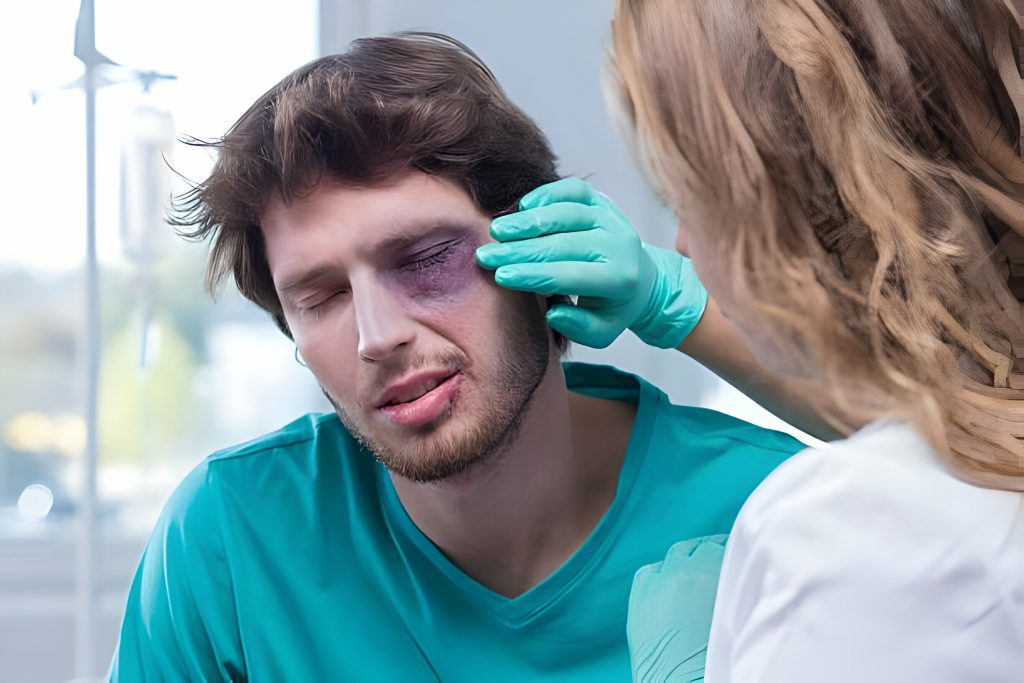Eye injury can sometimes lead to cataracts, a condition where the lens of the eye becomes cloudy, affecting vision. Understanding how eye injuries can cause cataracts is important for maintaining eye health. In this article, we will explore the relationship between eye injuries and cataracts, including the types of injuries that can lead to cataracts, how they affect vision, and treatment options.
Understanding Eye Injuries and Cataracts:
Eye injuries can result from various causes, including blunt trauma (such as a direct blow to the eye) or penetrating trauma (where a sharp object punctures the eye). These injuries can damage the lens of the eye, leading to the formation of cataracts. Additionally, exposure to radiation or certain chemicals can also increase the risk of developing cataracts.
Types of Eye Injuries That Can Cause Cataracts:
- Blunt Trauma: A direct blow to the eye can cause deformity of the eyeball, leading to cataract formation.
- Penetrating Trauma: Sharp objects penetrating the eye can puncture the lens, resulting in cataracts.
- Radiation Exposure: Prolonged exposure to radiation, such as in certain occupations like glass blowing, can also contribute to cataract development.
Effects on Vision and Quality of Life:
Cataracts caused by eye injuries can have a significant impact on vision and quality of life. As the lens becomes cloudy, it obstructs the passage of light into the eye, leading to blurred vision. In severe cases, cataracts can cause partial or total loss of vision. Additionally, damage to the delicate structures of the eye during an injury can increase the risk of complications such as glaucoma or inflammation, further affecting vision and overall eye health.
Timeline for Cataract Development:
The timeline for cataract development following an eye injury can vary. In some cases, the lens may become opaque almost immediately after the injury, leading to rapid onset of symptoms such as haziness in vision. In other cases, cataracts may develop gradually over time, with symptoms worsening progressively. Early detection and treatment of traumatic cataracts are essential for preserving vision and preventing complications.
Treatment Options for Traumatic Cataracts:
Treatment for traumatic cataracts depends on the severity of the condition and its impact on vision. In cases where the cataract is mild and not affecting vision significantly, observation may be recommended. However, if the cataract is causing vision impairment, surgery may be necessary to remove the cloudy lens and replace it with an artificial lens. Lens replacement surgery is a safe and effective treatment option for restoring vision in patients with traumatic cataracts.
Conclusion
In conclusion, eye injuries can indeed cause cataracts, a condition where the lens of the eye becomes cloudy, affecting vision. Understanding the relationship between eye injuries and cataracts is crucial for maintaining eye health and preventing vision loss. If you have experienced an eye injury or are concerned about your eye health, it is essential to seek prompt medical attention from an eye care professional. By understanding the risks and treatment options for traumatic cataracts, you can take proactive steps to preserve your vision and overall eye health.
Frequently Asked Questions (FAQs)
Can all eye injury cause cataracts?
Not all eye injury cause cataracts. Blunt trauma or penetrating injuries to the eye can lead to cataract development over time, depending on the severity.
How quickly can a cataract form after an eye injury?
Following an eye injury, cataracts can form almost immediately or develop progressively over time, depending on the severity and type of injury sustained.
What are the symptoms of traumatic cataracts?
Symptoms of traumatic cataracts may include haziness or opacity in the lens, blurred vision, compromised visual acuity, and possible complications like glaucoma or inflammation.
Can traumatic cataracts be treated without surgery?
In some cases, traumatic cataracts may be observed without immediate surgery if they do not significantly affect vision. However, lens removal surgery may be necessary if vision is impaired.
How does lens removal surgery work?
Lens removal surgery involves replacing the clouded lens with an artificial intraocular lens to restore vision. The procedure aims to improve visual acuity and quality of life for patients.
Are there long-term complications associated with traumatic cataracts?
Long-term complications of traumatic cataracts may include persistent vision changes, complications like glaucoma or inflammation, and the need for ongoing monitoring and treatment.
What can individuals do to prevent eye injury and traumatic cataracts?
To prevent eye injuries and traumatic cataracts, individuals should wear protective eyewear during activities that pose a risk of eye injury, practice workplace safety measures, and seek prompt medical attention for any eye injuries.
For more information Click here..

